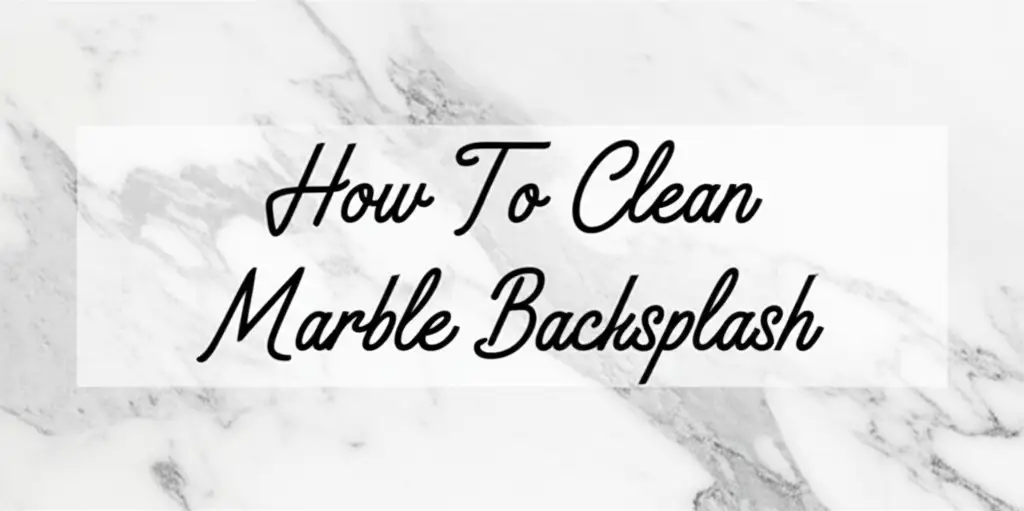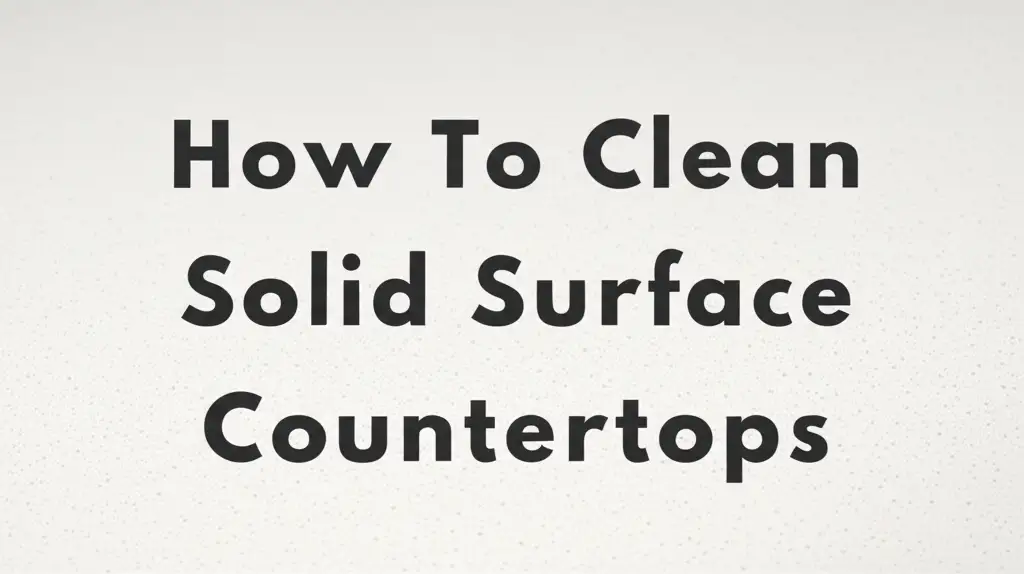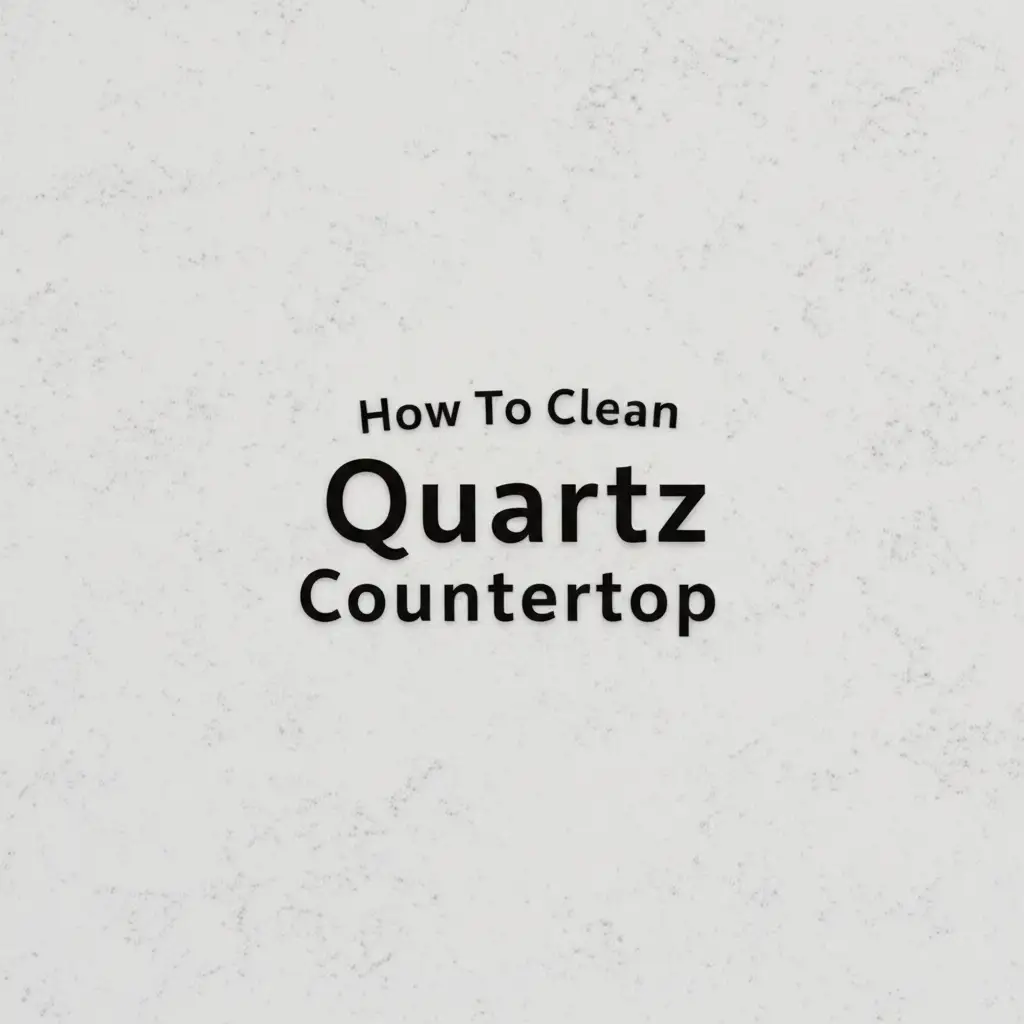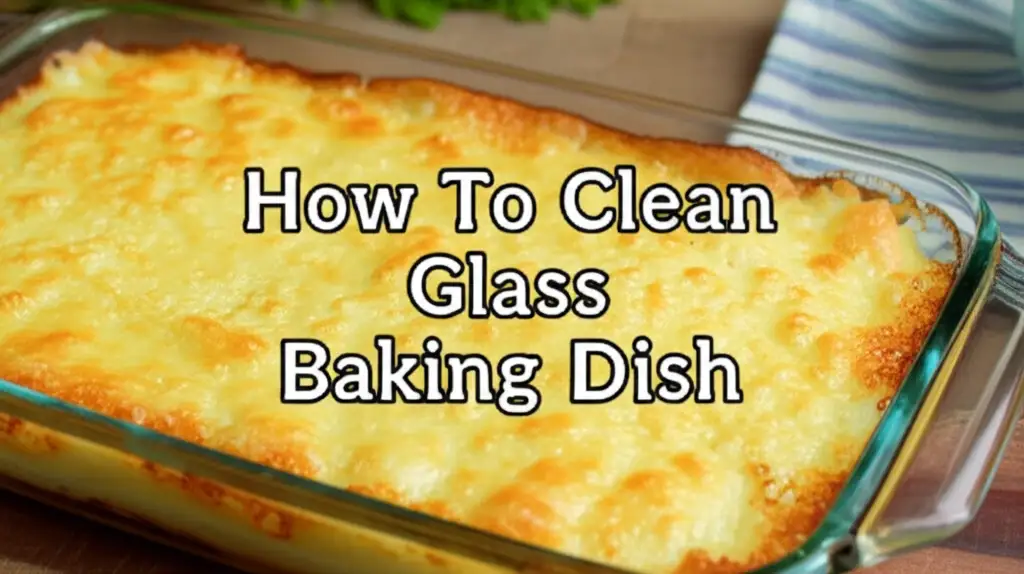· Home Cleaning · 13 min read
How To Clean Marble Backsplash

Maintain Your Home: How To Clean Marble Backsplash
A marble backsplash adds elegance and sophistication to any kitchen or bathroom. Its unique veining and luxurious feel can transform a space. However, maintaining this beautiful natural stone requires specific care. You need to know how to clean marble backsplash correctly to preserve its beauty. Improper cleaning methods can lead to damage, dullness, and unsightly stains. This article will guide you through the best practices for cleaning your marble backsplash. We will cover daily care, effective stain removal, deep cleaning techniques, and important preventative measures.
Takeaway
- Always use pH-neutral cleaners specifically designed for natural stone on your marble.
- Wipe spills immediately to prevent permanent etching and stubborn stains from forming.
- Regular sealing protects your marble backsplash surface from moisture and spills.
- Avoid acidic cleaners, abrasive tools, and harsh chemicals at all costs to prevent damage.
How do I properly clean a marble backsplash?
To clean a marble backsplash, always use a pH-neutral cleaner or mild dish soap mixed with warm water and a soft, non-abrasive cloth. Gently wipe the surface to remove dirt and grime. Rinse the area thoroughly with clear water to remove all soap residue. Finally, dry the marble immediately with a clean, soft towel to prevent water spots and streaks.
Understanding Your Marble Backsplash
Marble is a beautiful metamorphic rock. It forms from recrystallized carbonate minerals. This natural stone features stunning patterns and unique colors. Many people choose marble for its luxurious appearance.
However, marble is also quite porous. This means it has tiny holes on its surface. Liquids can seep into these pores easily. This makes marble susceptible to both etching and staining. Etching occurs when acidic substances react with the calcium carbonate in marble. This reaction removes the polished finish. It leaves dull, rough spots. Stains happen when colored liquids penetrate the stone’s surface. Oil, wine, coffee, and even some cleaning products can leave permanent marks.
Knowing marble’s properties helps you understand why special care is important. You cannot use just any cleaner on it. Harsh chemicals or acidic solutions will damage your marble backsplash. This knowledge is your first step towards proper maintenance. Recognizing marble’s delicate nature ensures you approach cleaning with the right mindset. You can learn more about specific stain issues by reading our guide on how to clean stains on marble.
Daily Care: Simple Steps for a Pristine Backsplash
Maintaining your marble backsplash starts with daily habits. Regular, gentle cleaning prevents dirt buildup and makes deeper cleaning easier. A little effort each day goes a long way. This ensures your backsplash remains beautiful and protected.
After cooking or preparing food, wipe down the backsplash. Use a soft cloth or sponge dampened with warm water. You can add a tiny drop of pH-neutral dish soap. This mild solution is safe for daily use. Focus on areas where food splatters or grease collects. Gently wipe the entire surface. Avoid scrubbing too hard. Harsh pressure can damage the stone.
The most important daily care tip is prompt spill cleanup. Acidic liquids like lemon juice, vinegar, or tomato sauce can etch marble quickly. Oily spills like cooking oil or butter can leave dark stains. When a spill occurs, blot it immediately with a soft, clean cloth. Do not wipe or spread the spill. Blotting lifts the liquid from the surface. Then, clean the area with your pH-neutral solution. Rinse it well with clear water. Dry the marble completely with a soft towel. This quick action protects your marble backsplash from permanent damage. Consistent daily care keeps your marble looking its best without much effort.
Tackling Common Stains on Marble Backsplash
Even with the best daily care, accidents happen. Stains on marble backsplash are a common issue. Different types of stains require different approaches. Knowing how to identify and treat them is important. This helps you restore your marble’s original look.
Identifying Stain Types:
- Oil-Based Stains: These include cooking oil, grease, butter, or cosmetics. They usually appear as a dark spot that slightly darkens the marble. Oil stains will typically penetrate the stone.
- Organic Stains: These come from coffee, tea, fruit, food, or mold. They often leave a pinkish-brown stain. These stains usually disappear after the source is removed.
- Water Spots/Mineral Deposits: Hard water leaves a white, chalky residue. This is common near faucets or in areas with splashes.
- Etching: This is not a stain, but a chemical burn. Acidic substances dissolve the marble surface. It leaves dull, lighter areas that feel rough.
Stain Removal Methods: For oil-based stains, create a poultice. Mix baking soda with a small amount of household ammonia. Form a thick paste. Apply the paste generously over the stain. Cover it with plastic wrap and tape the edges. Let it sit for 24-48 hours. The poultice draws the oil out of the stone. Remove the poultice and rinse the area. For organic stains, use hydrogen peroxide mixed with a few drops of ammonia. Apply it to the stain with a clean cloth. Let it sit for a few minutes. Rinse thoroughly. For water spots, gently buff the area with fine steel wool (#0000 grade). Be very careful, as this can scratch polished marble. Alternatively, use a stone cleaner designed to remove mineral deposits. For comprehensive guidance on removing specific types of stains from your natural stone surfaces, refer to our detailed article on how to clean marble countertops stains. Always test any cleaning solution in an inconspicuous area first. This prevents further damage.
Deep Cleaning Your Marble Backsplash
While daily cleaning keeps your marble backsplash looking good, periodic deep cleaning is essential. This removes embedded dirt and ensures a thorough clean. Deep cleaning should be done monthly or quarterly, depending on your kitchen’s use. It helps maintain the marble’s luster and hygiene.
Start by clearing the backsplash area. Remove any items like spice racks or decor. This gives you full access to the surface. Next, prepare your cleaning solution. Use a pH-neutral stone cleaner. You can find these at hardware stores or specialty stone shops. Follow the product’s instructions for mixing with water. Some cleaners come in spray bottles. For effective cleaning, apply the solution to a soft cloth or sponge. Wipe down the entire marble backsplash section by section. Use gentle, even strokes. Work from top to bottom.
Allow the cleaner to sit for a few minutes if the product instructions recommend it. This allows the solution to lift dirt and grime. Do not let it dry on the marble. Then, wipe the surface with a clean, damp cloth. Use plain warm water for rinsing. It is crucial to remove all cleaner residue. Any remaining soap can dull the marble over time. After rinsing, dry the marble backsplash immediately and completely with a soft, clean towel. This prevents water spots and streaks. This deep cleaning process keeps your marble backsplash sparkling. It extends its life and beauty. This cleaning process is similar to how you would care for other marble surfaces in your home, like when you clean marble in bathrooms. For general marble cleaning tips, consider our advice on how to clean marble countertops in bathrooms.
Protecting Your Marble: Sealing and Prevention
Protecting your marble backsplash goes beyond just cleaning. Sealing is a vital step in maintaining its integrity and beauty. It creates a barrier that helps prevent spills from penetrating the stone. This makes cleaning easier and reduces the risk of permanent stains and etching.
Marble is naturally porous. This means it absorbs liquids easily. A good quality stone sealer fills these tiny pores. It does not make marble completely stain-proof. However, it significantly reduces the absorption rate. This gives you more time to clean up spills before they cause damage. You should seal your marble backsplash regularly. The frequency depends on the type of sealer and how much use your backsplash gets. Generally, resealing every 6-12 months is a good practice. Some high-quality sealers can last longer. Test your marble’s absorbency to determine if it needs sealing. Pour a small amount of water (about 1/4 cup) on a clean, dry section. Let it sit for a few minutes. If the water beads up, your sealer is still working. If it soaks in and darkens the marble, it is time to reseal.
Beyond sealing, prevention is key. Always use trivets or cutting boards on your countertops, even near the backsplash. This prevents direct contact with hot pots or sharp objects. Avoid placing acidic food items directly on the marble. Keep citrus fruits, vinegar bottles, and wine glasses away from the surface. Wipe up any splashes immediately. Choose cleaning products carefully. Never use harsh chemicals, abrasive scrubbers, or general bathroom cleaners. Stick to pH-neutral stone cleaners. These simple habits will extend the life and beauty of your marble backsplash.
Grout Care for Your Marble Backsplash
Your marble backsplash includes grout lines. Grout is the material between the marble tiles. It is typically porous, much like marble itself. However, grout requires slightly different cleaning methods. Proper grout care is important for the overall look of your backsplash. Dirty or stained grout can make your entire backsplash appear unkempt.
Before cleaning the grout, ensure your marble is sealed. This protects the marble from any cleaning solution designed for grout. For routine grout cleaning, use a pH-neutral cleaner. Many stone cleaners are safe for both marble and grout. Apply the cleaner to the grout lines with a soft-bristled brush. A toothbrush works well for this purpose. Gently scrub the grout in a circular motion. Avoid scrubbing too hard on the marble tiles themselves. This gentle action helps lift dirt and grime from the grout pores.
For stubborn grout stains, you might need a specialized grout cleaner. Always choose one specifically labeled as “safe for natural stone” or “marble-safe.” Using the wrong product can damage your marble. Apply the cleaner according to the product instructions. Allow it to sit for the recommended time. Then, scrub gently and rinse thoroughly with clean water. Make sure to rinse off all cleaner residue from both the grout and the marble. Dry the area completely with a soft cloth. Regularly cleaning and sealing your grout lines helps prevent mold and discoloration. It keeps your marble backsplash looking fresh and clean. For more in-depth advice on maintaining grout, you can refer to our article on how to clean marble grout.
What Not to Use When Cleaning Marble Backsplash
Knowing what to avoid is as important as knowing what to use. Many common household cleaners can cause irreversible damage to marble. Marble reacts poorly to certain chemicals and abrasive materials. Using the wrong products will etch, dull, or stain your beautiful backsplash.
Acidic Cleaners: This is the most critical rule. Never use acidic cleaners on marble. Common culprits include:
- Vinegar: Vinegar is highly acidic. It will immediately etch marble. This creates dull spots that look like water stains.
- Lemon Juice or Citrus-Based Cleaners: Like vinegar, these contain strong acids. They will also etch marble on contact.
- Bleach: While not always acidic, bleach is a strong oxidizer. It can strip the sealer from marble. This makes the stone more vulnerable to stains. It can also cause discoloration over time.
- Ammonia-Based Cleaners: Products like Windex often contain ammonia. These can break down the marble’s sealant. They can also dull the surface and leave streaks.
Abrasive Tools and Cleaners: Avoid anything that can scratch the surface.
- Scrub Brushes with Stiff Bristles: These can scratch polished marble.
- Scouring Powders or Abrasive Cleaners: These contain tiny particles that will scratch and dull the marble.
- Steel Wool (except for specific stain removal, with extreme caution): General use of steel wool will scratch marble.
Harsh Chemical Cleaners:
- General Purpose Cleaners: Many multi-surface cleaners are too harsh for marble. They may contain acids or other damaging chemicals.
- Bathroom Cleaners: Cleaners designed for shower tile or toilets often contain strong acids. They are completely unsuitable for marble.
Always read product labels carefully. Look for cleaners specifically designed for natural stone or marble. These products are pH-neutral and gentle. They protect your investment. Choosing the right products helps you effectively clean marble backsplash surfaces without causing harm.
FAQ Section
1. How often should I clean my marble backsplash?
For daily maintenance, wipe your marble backsplash with a soft cloth and warm water after each use. A more thorough deep cleaning with a pH-neutral stone cleaner should be done once a week or at least once a month. This schedule helps prevent dirt and grime buildup.
2. Can I use vinegar on my marble backsplash?
No, you should never use vinegar on your marble backsplash. Vinegar is acidic and will react with the calcium carbonate in the marble. This reaction causes etching, which appears as dull spots or marks on the surface. Etching is permanent damage to the stone’s finish.
3. How do I remove water spots from marble?
Water spots are often mineral deposits from hard water. For fresh water spots, gently wipe with a damp cloth and dry immediately. For stubborn spots, use a fine steel wool pad (#0000 grade) or a specialized stone cleaner designed for mineral deposits. Be gentle to avoid scratching the surface.
4. What is etching and how can I prevent it?
Etching is surface damage caused by acidic substances reacting with marble. It results in dull, rough patches on the polished stone. Prevent etching by immediately wiping up spills of acidic liquids like fruit juices, vinegar, or certain foods. Always use pH-neutral cleaners on marble.
5. How often should I seal my marble backsplash?
The frequency of sealing depends on the marble’s porosity and use. Generally, marble backsplashes should be sealed every 6 to 12 months. You can test your sealer by dropping water on the surface; if it soaks in quickly, it is time to reseal.
6. Can I use a steam cleaner on marble?
It is generally not recommended to use a steam cleaner on marble. While steam is natural, the high heat can damage the sealer on the marble. It can also force moisture into the porous stone. This may lead to water damage or stains. Stick to gentle, pH-neutral cleaners and soft cloths.
Conclusion
Caring for your marble backsplash is a commitment, but it is well worth the effort. This beautiful natural stone adds lasting value and charm to your home. Knowing how to clean marble backsplash effectively ensures its beauty endures for years. Remember, gentle daily care, prompt spill cleanup, and the right cleaning products are key. Avoid harsh chemicals and abrasive tools at all costs. Regular sealing also provides an essential layer of protection against stains and etching.
By following these simple guidelines, you can keep your marble backsplash looking pristine. Its elegance will continue to enhance your kitchen or bathroom space. Embrace these proper cleaning and maintenance habits. Your stunning marble backsplash will thank you for the consistent care. Make proper marble care a part of your regular cleaning routine.
- marble cleaning
- backsplash care
- stone maintenance
- kitchen cleaning
- stain removal
- natural stone




